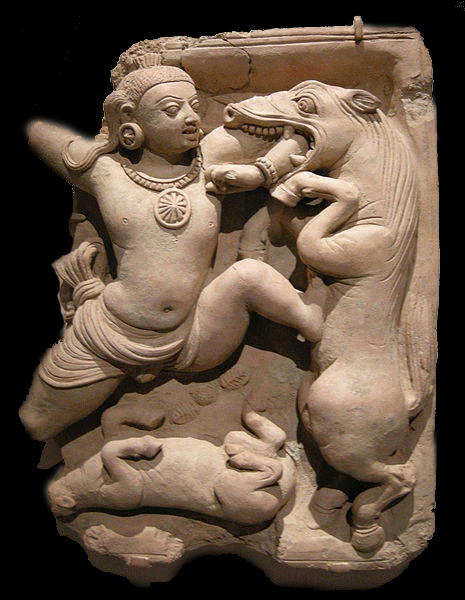
|
|
|
|
BY: SUN STAFF

Krsna Killing the Keshi Demon May 08, 2015 — CANADA (SUN) — A serial presentation of India's great history, religious movements and temple architecture.
The Guptas
'The Classical Age refers to the period when much of the Indian Subcontinent was reunited under the Gupta Empire (ca. 320 AD–550 AD).[39] This period, also known as the Golden Age of India[40], was marked by extensive achievements in science, technology, engineering, art, dialectic, literature, logic, mathematics, astronomy, religion and philosophy that crystallized the elements of what is generally known as "Hindu culture".[41]
The decimal numeral system, including the concept of zero, was invented in India during this period.[42] The peace and prosperity created under the leadership of the Guptas enabled the pursuit of scientific and artistic endeavors in India.[43] The high points of this cultural creativity are magnificent architectures, sculptures and paintings.[44]
The Gupta period produced scholars such as Kalidasa, Aryabhata, Varahamihira, Vishnu Sharma, and Vatsyayana, who made great advancements in many academic fields.[45] Science and political administration regained new heights during the Gupta era.
Strong trade ties also made the region an important cultural center, and it became a base that would influence nearby kingdoms and regions in Burma, Sri Lanka, Malay Archipelago and Indochina.
The Guptas performed Vedic sacrifices to legitimize their rule, but they also patronized Buddhism, which continued to provide an alternative to a by then degraded Brahmanical orthodoxy.
The military exploits of the first three rulers —Chandragupta I (ca. 319–335 A.D.), Samudragupta (ca. 335–376 A.D.), and Chandragupta II (ca. 376–415 A.D.) —brought much of India under their leadership.[46] They successfully resisted the Northwestern Kingdoms until the arrival of the Hunas, who established themselves in Afghanistan by the first half of the 5th Century A.D., with their capital at Bamiyan. Nevertheless, much of the Deccan and southern India were largely unaffected by this state of flux in the north.'
FOOTNOTES:
[39] India - Historical Setting - The Classical Age - Gupta and Harsha
| |